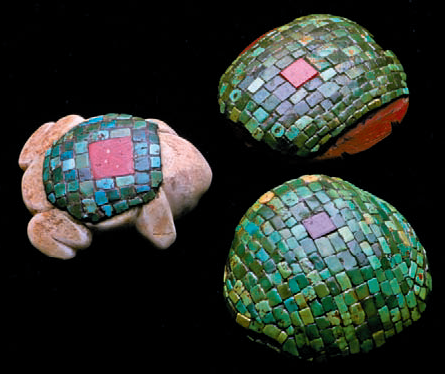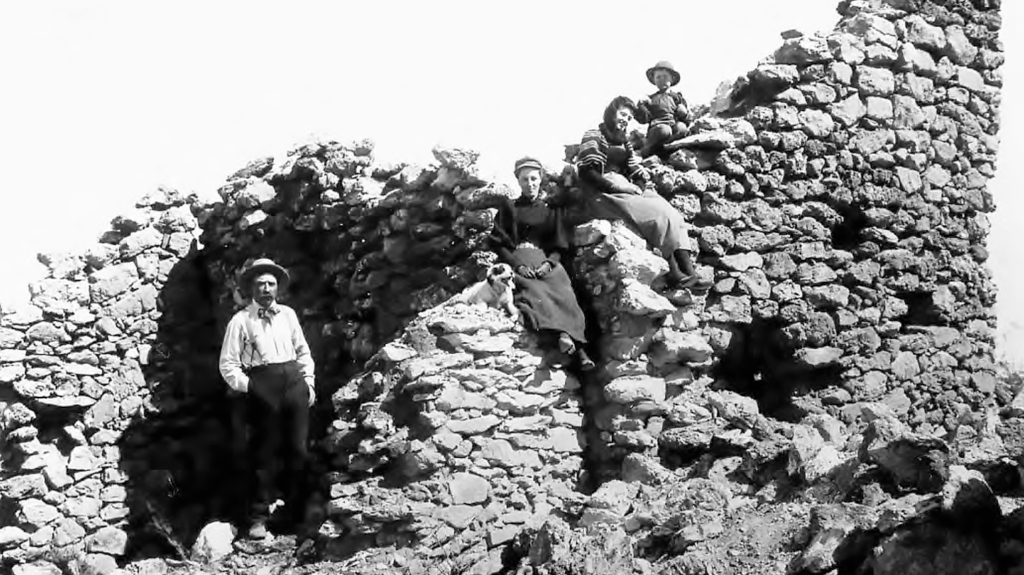Our Hisatsinom Hilltop Sites of the Verde Valley virtual tour focuses on two Southern Sinagua or Hisatsinom villages in the Verde Valley of Arizona: Sugarloaf and Atkeson Pueblos. These lonely hilltop sites are now protected by The Archaeological Conservancy, but they were once the center of excavations by pioneering archaeologists and, unfortunately, looters. Along with architecture, tools, and pottery, archaeologists also discovered elaborately created mosaics depicting animals.
A 1900 article on prehistoric turquoise mosaic artifacts published by W.P. Blake discusses a rare bird mosaic that was discovered at Atkeson Pueblo. He believed the object represented a raptor that symbolized political standing within the tribe. Blake also mentions another common animal mosaic that is found in the area which is that of a toad. Interestingly enough, a Prescott archaeologist named James Simmons reportedly discovered a toad pendant with a shell backing at Sugarloaf Pueblo in the 1930’s. [Read the report here.]

Mosaic bird pendant from the Arizona State Museum. Photo by Robert K.Liu / Ornament; courtesy of the Pomona College Museum of Art, Claremont, California or The Arizona State Museum, Tucson.
An article by Robert K. Liu discussed the possible Indigenous symbolism associated with these creatures. Liu theorizes, just as Blake did, that the bird mosaics are raptors that symbolize political standing and power. He notes that toads and frogs are often associated with water and fertility and that many such objects were discovered in burials containing women and children. There is also the possibility that these objects represent clan symbols, social standing, or even an occupation within a group. There are many possibilities, but the only ones who truly know the meaning of these amazing objects are the people who left them behind hundreds of years ago.

Three mosaic frog pendants from the Arizona State Museum. Photo by Robert K.Liu / Ornament; courtesy of the Pomona College Museum of Art, Claremont, California or The Arizona State Museum, Tucson.
Animal mosaics have been found in relation to a variety of Indigenous cultures across the American southwest including Ancestral Pueblo, Hohokam, Sinagua, Salado, and Mogollon. Similar objects have also been discovered throughout Mesoamerica. In the Southwest, they have been discovered primarily in mortuary contexts, which makes the artifacts rare and increasingly more difficult to study. Several examples, like the ones pictured below, are currently housed in the Arizona State Museum, including several from the Verde Valley region.




